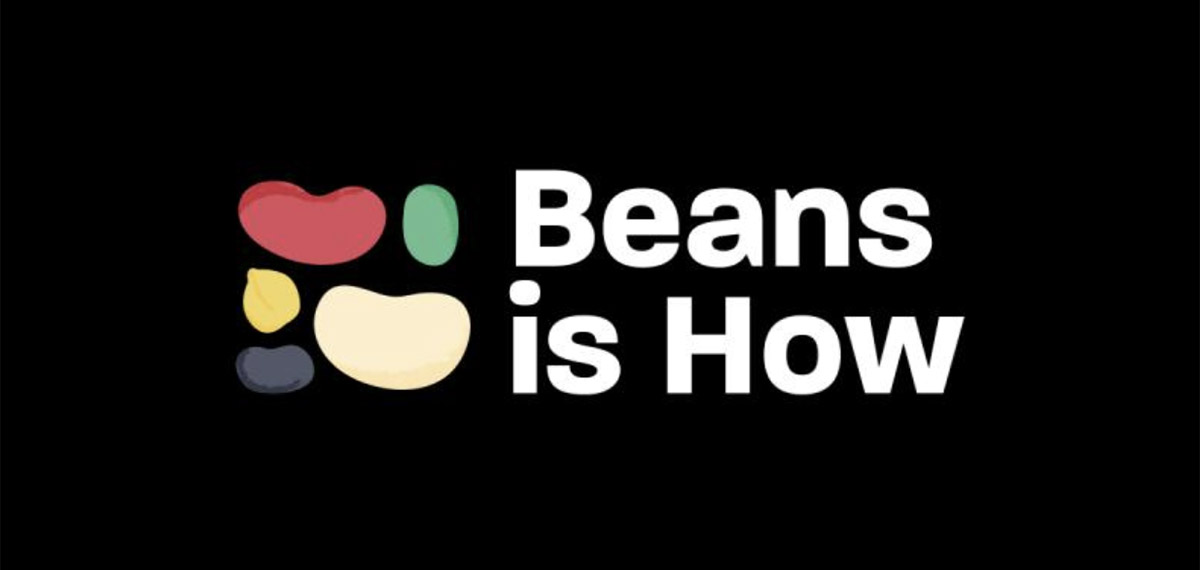February 7, 2023
The SDG2 Advocacy Hub launched the Beans is How Coalition at COP27, an ambitious campaign aiming to double global bean consumption by 2028. Willow Shah-Neville speaks to members of the coalition about how they plan to achieve their goals.


Food insecurity has been a pressing issue for a number of years now. In 2015, when the United Nations came up with the Sustainable Development Goals (SDGs), ending world hunger was listed as the second goal. Seven years on, and, according to a report by the UN, the amount of people facing food insecurity has risen, with up to 828 million people affected by hunger in 2022; a 46 million increase on 2020. A multitude of factors, including Covid-19, conflict, climate change, populational increase and the cost of living crisis, has contributed to this grievous statistic.
The SDG2 Advocacy Hub is tasked with trying to bring these numbers down. It aims to end worldwide hunger by 2030, while also promoting healthy eating and sustainable agriculture through advocacy and global campaigns. The Hub brings together NGOs, advocacy groups, civil society, private sector parties and UN agencies to share ideas on how to best reach the target of ‘zero hunger’.
During the UN’s Global Innovation Hub at COP27 in Sharm el-Sheikh, Egypt, the SDG2 Hub officially launched the Beans is How Coalition, which aims to double the global consumption of beans, as well as peas, pulses, lentils and legumes, by 2028.
Finding one simple solution to help tackle global hunger, malnutrition and climate issues is no small feat but that’s exactly what the SDG2 Advocacy Hub is attempting to achieve with Beans is How. Rather than a new technology or scientific breakthrough, it puts forward the idea that it the humble bean - of which many different varieties can be readily bought in almost any supermarket in the world - is mighty enough to achieve these goals on its own.
Paul Newnham, Executive Director of the SDG2 Advocacy Hub, explained that the idea for the campaign was developed during the UN Food Systems Summit back in 2021, where Chef Sam Kass, who served as former U.S. President Barack Obama’s Senior Policy Advisor on Nutrition and Assistant Chef in the White House, brought up the untapped potential of beans. After looking into the idea further, they quickly found a consensus across a wide range of experts and organizations: bringing beans to the forefront of people's diets encourages healthier eating and is a sustainable and affordable option for both consumers and farmers alike. Beans is How was subsequently announced at the African Green Revolution Forum (AGRF) Summit in September of last year before being officially launched at COP27.
“We must urgently transform unhealthy, fragile food systems and create a shift towards more resilient and sustainable farming, production and food consumption.”
Ultimately, the project is designed to bring awareness to the fact that beans are a key solution to the world’s financial, health and climate challenges:
“149 million children under the age of five had stunted growth and development due to a chronic lack of essential nutrients in their diets, while 39 million were overweight,” said Newnham. “In parallel to the global food crisis, the window to limit global warming to 1.5°C is rapidly closing and the world is already experiencing the effects of the climate crisis. Rising temperatures are accelerating environmental degradation, weather extremes, and natural disasters, and causing biodiversity loss, food and water insecurity. The most vulnerable members of society are the most disproportionately affected. Globally, a series of conflating world events are causing inflation and a rise in the cost of many commodities.”
This is why, he explains, “we must urgently transform unhealthy, fragile food systems and create a shift towards more resilient and sustainable farming, production and food consumption.”
However, in order to release the untapped potential of beans and pulses, it’s important to change the perception of them from a ‘last resort’ food item to one that people actively want to eat. As a result, one of the core areas of the campaign involves raising awareness about the health benefits beans and pulses can bring. “To shift the perception of beans from a stop-gap food to a desirable source of nutrition, Beans is How is engaging with key audiences across food systems and beyond to champion beans: the farmers who grow them, scientists who study them, companies who sell them, chefs who serve them, and people who consume them,” explains Newnham.
Beans is How also aims to uplift policy and academic research and relies on stakeholders working together to achieve its ambitious goals. It has multi-sectoral stakeholder groups in place, including the Bean Board, the Science and Innovation Advisory Council and the Bean Coalition, which provide guidance and execute the campaign’s targets. It also has a sizeable coalition of partners on board, including Kraft Heinz, Bold Bean Co, Hodmedod’s, The Pan-African Bean Alliance (PABRA), CGIAR, Rockefeller Foundation, Grow It Yourself, the World Business Council for Sustainable Development (WBCSD), Chef Ann Foundation, The Chefs’ Manifesto, Cohere Food Lab, Conscious Impact, EAT, Gcwalisa, The Global FoodBanking Network, ISS Guckenheimer, Scaling Up Nutrition, and The United Nations Foundation.
Helene Herve, International Head of Marketing at Kraft Heinz, commented on why the company - renowned for British favorite ‘Baked Beanz’ - decided to become involved with the initiative:
“We’re transforming Kraft Heinz to lead the future of food, with plant-based foods as a key part of our innovation and growth strategy. Beans have been part of our portfolio for more than 100 years. They are a superfood, high in protein and fibres. We believe beans have the potential to help people eat better and to build better food systems. This is why we’re thrilled to have joined the global ‘Beans is How’ coalition as a founding partner, we want to be part of this great movement that will drive awareness about the multiple benefits of beans worldwide.”
What is it about beans and pulses that make them the chosen food to solve some of the world’s most pressing issues? “Beans are affordable, accessible, have thousands of varieties, and are an integral part of many cultures and diets around the world,” explains Newnham. “They are resilient and a farmer’s friend, growing even in harsh conditions, and fixing atmospheric nitrogen into the soil.”
Finding sustainable, resilient food sources has become a priority since the effects of climate change show no signs of slowing down and rising temperatures are causing extreme weather events that negatively impact agriculture and make growing certain crops extremely difficult. With this in mind, beans and pulses’ nitrogen-fixing qualities is a major plus when it comes to mitigating climate change. With the war in Ukraine causing a global fertilizer shortage, they’re a fantastic ally for farmers the world over and their low water usage means they can be grown even in drought-affected areas, arid lands and poor soils.
Beans also come with the advantage of being affordable for consumers; the average worldwide cost for 1kg of white beans was said to be $3.73, while dried pinto beans are priced at around $0.07 per half a cup serving in the US.
Beans is How doesn’t try to hide the fact that its goals are extremely ambitious; the campaign has a distinct set of aims for the next five years, including broad behaviour changes and targets based around policy and sustainable development. These include shifting diets towards more plant-based proteins, improving malnutrition rates, reducing food waste, increasing production along with innovation and research for new varieties, promoting sustainable agricultural practices, and improving overall soil quality.
While reaching the SDG2 Advocacy Hub’s target of ending world hunger certainly seems like a long way off given the current statistics, Newnham seems confident that the coalition can actualize its aims.
“Through the SDG2 Advocacy Hub’s model – convening and unifying stakeholder agendas and messaging, uplifting stories and champions through innovative advocacy and communication, and applying accountability pressure – Beans is How will change the perception of beans globally, making beans aspirational to consumers, favorable for investors, profitable for farmers and a priority for policymakers.”
“Tiny but mighty, charming but disruptive – beans are the future we are hungry for.”
He goes on to stress the vital importance of global food security, particularly for low-income countries: “Food security is at the heart of thriving nations and communities; a well-fed child goes on to become an active healthy member of society, participating in helping nations grow. Similarly, farming and food production is the backbone of many economies, particularly in low-income countries. Investing in foods like beans, which are good for people to eat, good for farmers to grow, and beneficial for the environment, can drive the transition we need towards healthier, more resilient food systems.”
And, to offer even more encouragement that beans and pulses could be the world’s saviour, scientists are consistently working on developing improved varieties that are more resistant to drought and higher temperatures in order to give people access to sources of protein in countries that have been affected the most by climate change and to future-proof against global warming in general.
“We are far from realising the full potential of beans for lives, livelihoods and the future of the planet,” said Newnham. “Tiny but mighty, charming but disruptive – beans are the future we are hungry for.”
Disclaimer: The opinions or views expressed in this publication are those of the authors or quoted persons. They do not purport to reflect the opinions or views of the Global Pulse Confederation or its members.